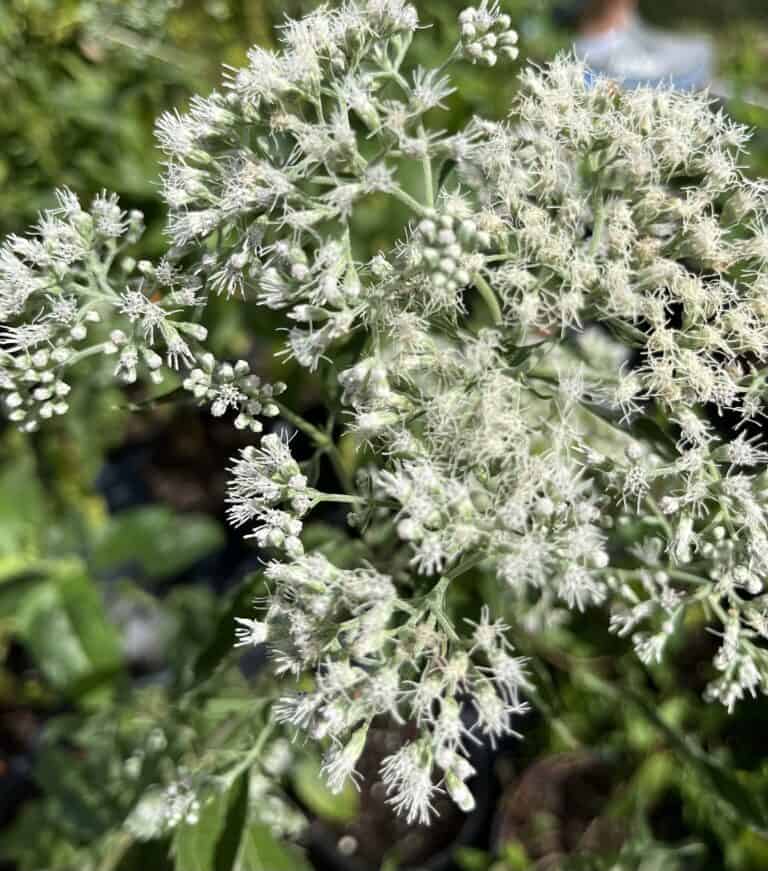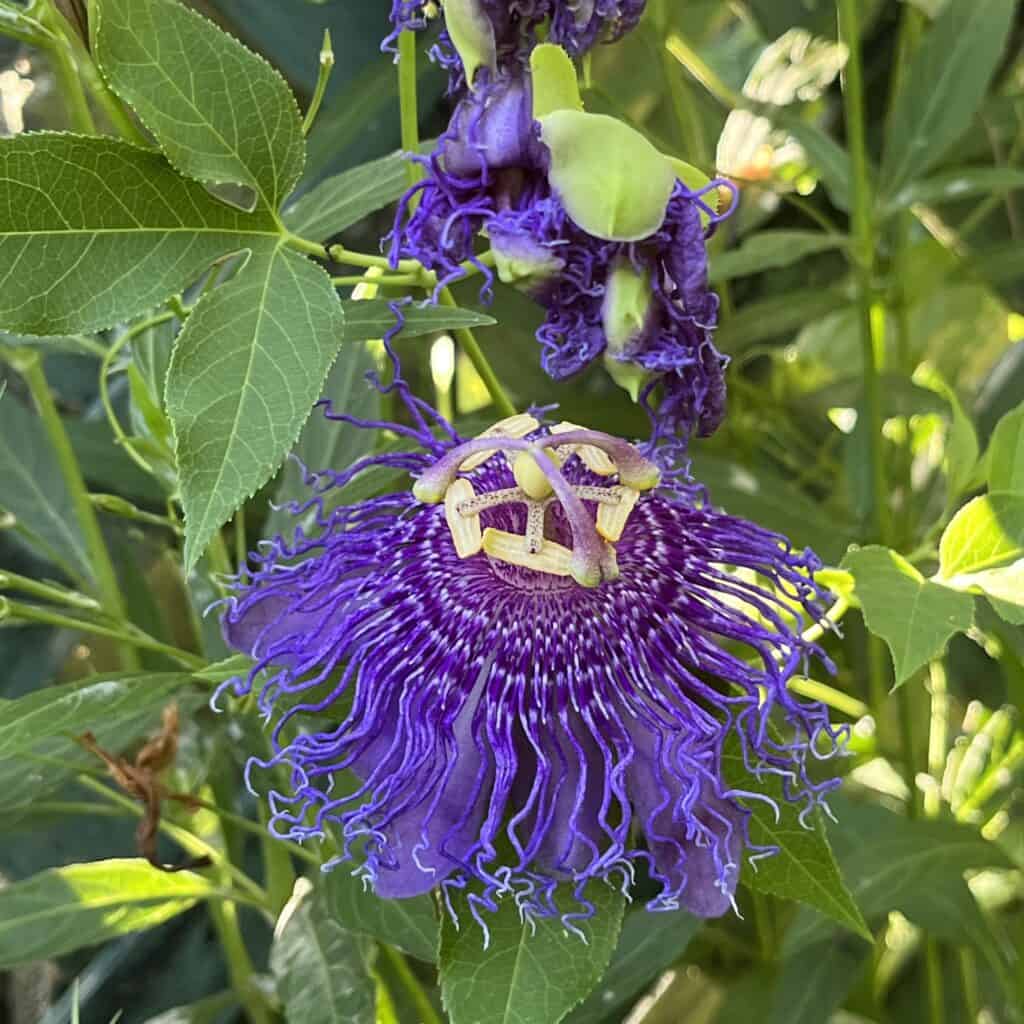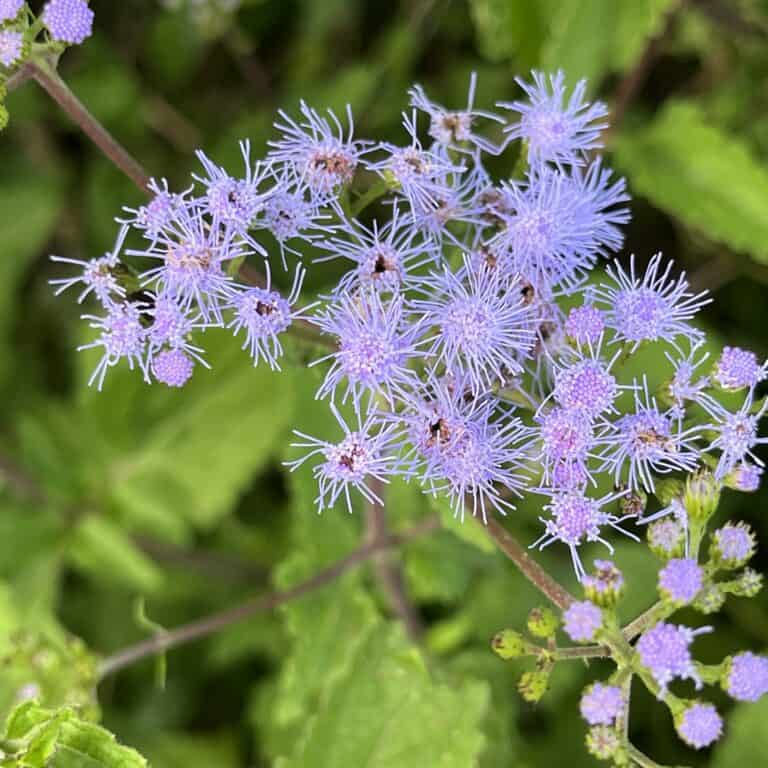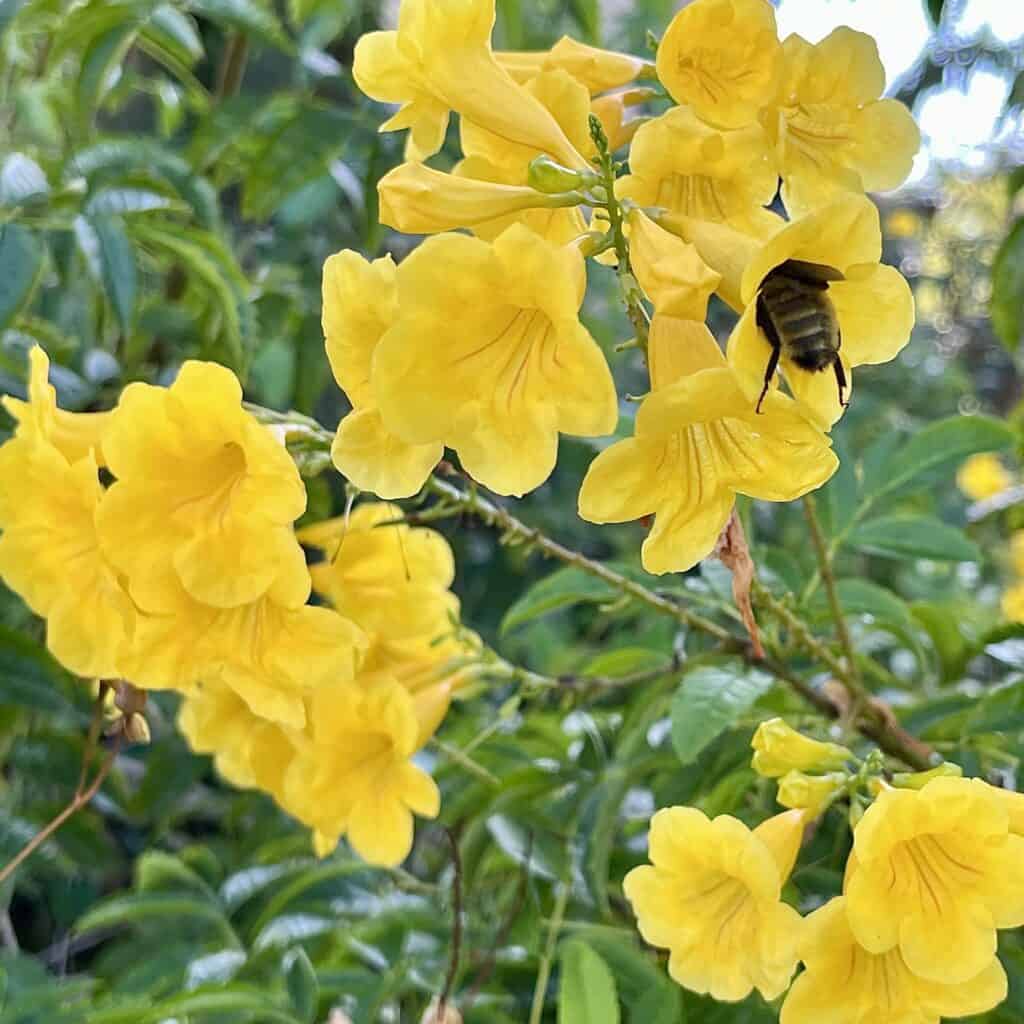Pollinator Gardening is gaining popularity as more gardeners begin to embrace practices that support wildlife habitats in their home landscape.
Many plants rely on various animals to transfer pollen from flower to flower.
Pollinators include many types of insects, bees, butterflies, moths, beetles, wasps
some flies and Hummingbirds. Plants produce showy flowers to attract pollinators
to the blossoms and provide nectar to reward them. Some pollinators such as bees and hummingbirds also collect some of the pollen for food.
Home gardeners can help support native pollinators by creating pollinator-friendly landscapes and pollinator gardens, as well as protecting wildlife habitat.
Pollination in plants occurs when pollen from the male parts of flowers is
transferred to the female parts of flowers and fertilizes the eggs. This results in
fruit containing seeds. The flowers of some plants are able to carry out this
process without any help from pollinators. The structure of tomato flowers, for
instance, allows them to be pollinated even if not visited by bees. Many trees and
all of the grasses are wind pollinated and do not make use of pollinators. They
release pollen into the air and allow the wind to carry it to the female parts of
other flowers.

`‘American Boneset’
Eupatorium perfoliatum
The flowers of plants that use pollinators have evolved to attract and use specific
pollinators. They are structured to ensure pollination from the correct pollinator
and exclude others. Plants that produce long, tubular flowers are generally
pollinated by hummingbirds, butterflies and moths, which are able to access the
nectar with their long tongues. Open-faced flowers and those with short flower
tubes make nectar available to short-tongued bees. Bees will sometimes crawl to
the base of a long-tubed flower and chew a hole in base of the tube to access the nectar without pollinating the flower. If the flowers of plants are not pollinated,
they will not produce seeds and fruit. In nature, this may prevent a species from
properly reproducing and maintaining its population. Native birds and mammals
feed on the fruits and seeds that result from pollination. Food supplies for many
native animals may be affected if low populations of pollinators prevent proper
pollination. We can use our landscapes help provide food and shelter for
pollinators and help increase their populations in a variety of ways.
Select landscape plants, such as trees, shrubs, ground covers, vines, perennials and bedding plants, keeping pollinators in mind. Choose native species when you can as well as non-native species. choose plants that bloom at various times of the year, from spring to fall and in winter.

‘Maypop’
Passiflora incarnata

‘Blue Mistflower’
Conoclinium coelestinum
Flowering shrubs and trees add beauty, color, and structure to any garden, as well
as food and shelter to wildlife. consider: Button bush, Virginia sweetspire,
viburnum, lacecap and panicle hydrangeas and maple serviceberry. Shade trees,
such as oak, maple, elm and pine, are wind pollinated. Include flowering trees such
as native magnolias, dogwood, crape myrtle, native hollies, American fringe tree,
redbud, black cherry, American persimmon and loquat. Avoid varieties that have
highly double flowers with many petals. Rather, choose those with single or semi-
double flowers because they provide more nectar and pollen. Flowering vines like
coral honeysuckle, cross vine, yellow jessamine, American wisteria and coral vine
bloom at various times and are attractive to a variety of pollinators.
Planting perennials and bedding plants that provide food to pollinators. Pollinator
gardens are generally attractive and colorful due to the use of abundantly flowering plants. Choose a wide variety of plants that produce flowers of many different shapes, colors and sizes to attract the greatest diversity of pollinators. Also, use perennials and bedding plants that bloom at different times of the years. Cool season bedding plants, grown from October to May, will even provide flowers during winter, when bees and other pollinators may forage on mild days.
The flowers of plants that use pollinators have evolved to attract and use specific
pollinators. Flowers are structured to ensure pollination from the correct pollinator and may exclude others. Plants that produce long, tubular flowers such as many of the salvias are generally pollinated by hummingbirds, butterflies and moths, which are able to access the nectar with their long tongues. Open-faced flowers and those with short flower tubes such as clovers (white and red), members of the aster family, (daisies, sunflowers and zinnias), make nectar available to short-tongued bees. Bees will sometimes crawl to the base of a long-tubed flower and chew a hole in base of the tube to access the nectar without pollinating the flower. If the flowers of plants are not pollinated, they will not produce seeds and fruit. In nature, this may prevent a species from properly reproducing and maintaining its population. Many native birds and mammals feed on the fruits and seeds that result from pollination. Therefore, food supplies for many native animals may be affected if low populations of pollinators prevent proper pollination. We can use our landscapes to provide food and shelter for pollinators and help increase their populations in a variety of ways.

Zinnia
Zinnia elegans
Plant a variety of flowers with different colors, shapes and bloom times. Aim
for plants that bloom in succession from early spring to late fall. Use big and bold
plantings or groups of plants to catch pollinators’ attention. Annuals bloom from
planting until frost so you get a lot of color for a long period of time. They offer
quick results: consider sweet alyssum, cosmos, lantana, Petunias, Pentas,
sunflowers, and zinnias. Perennials return for many seasons, so they’re a great way
to build your pollinator garden over time. But they are a long-term commitment
that requires patience. consider: Bee balm, catmint, calamint, coneflowers,
rudbeckia, and milkweed.
Herbs and vegetables such as Borage, chives, sage, cilantro, and dill are all popular
with pollinators, so plant them among your other edibles or in beds and pots
throughout your landscape. Vegetables such as fennel and heirloom plants such as scarlet runner beans also attract tons of pollinators. Provide larval food plants for butterflies. Butterflies lay eggs only on certain plants, which vary depending on the species of butterfly. Monarch caterpillars will only feed on milkweed plants, and Gulf fritillary caterpillars prefer species of passion vines. The parsley worm, which grows up to be the Eastern black swallowtail, feeds on parsley, dill and fennel. Sulfur butterflies lay their eggs on cassias, while bean leaves are the preferred food of long-tailed skipper caterpillars.
Dedicate an area to a wildflower meadow planting. A blend of native wildflower
seeds, both annual and perennial types, may be planted in that area and allowed to grow to create a more natural habitat for pollinators. Leave some leaf litter and
seedheads intact over the winter to give pollinators a place to shelter during cold
weather. A simple water feature makes the space even more welcoming to insects. Set up a birdbath or shallow water dish with a pebble bottom for pollinators to land, changing the water every few days so mosquitos won’t have a place to breed.
Limit or eliminate the use of chemicals. A strong spray of water from the hose will
knock off pests such as aphids. Discard or prune off diseased plants/plant parts,
ongoing problem. Use organic products only when necessary. Remember, broad-
spectrum products kills both bad and good insects.
Visit Pollinator Partnership website. Click on Plant Guides then
enter your 5-digit zip code. Learn more about pollinator gardening from LSU AgCenter.
*Most information shared here from article by Dan Gill, retired Consumer Horticulturist, LSU AgCenter.

By Karen Blackburn
Master Gardener of Greater New Orleans
Photo credits:
Karen Blackburn

